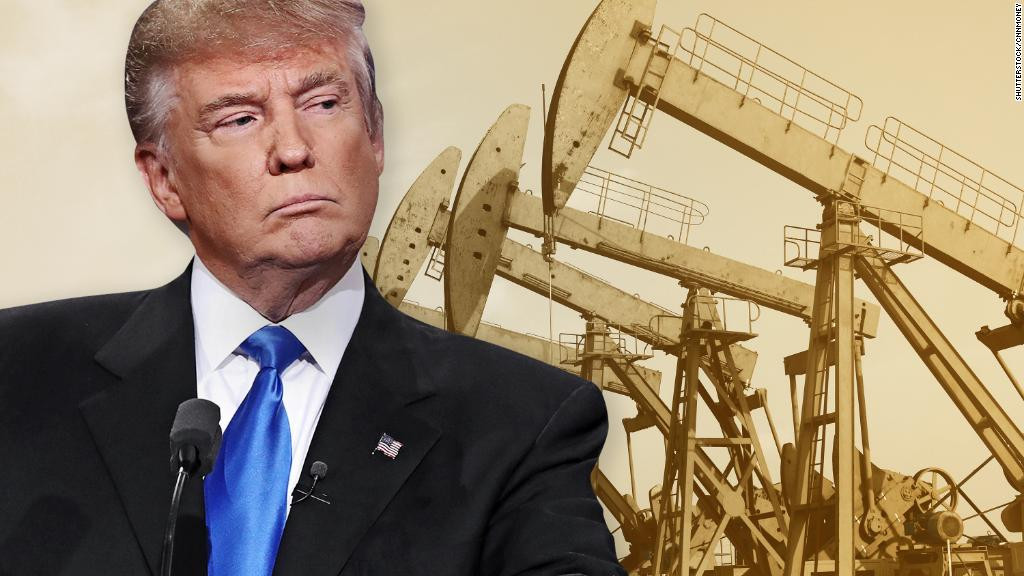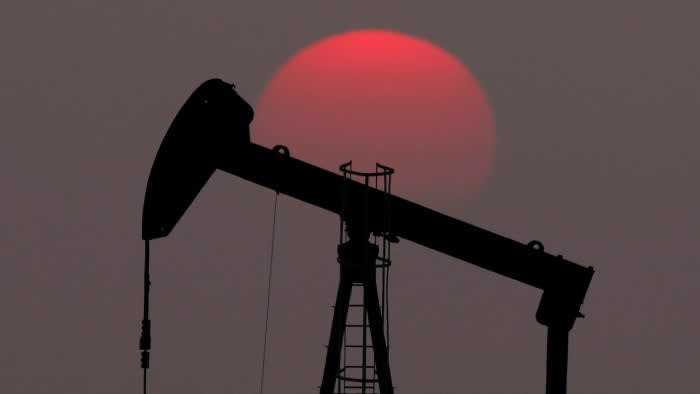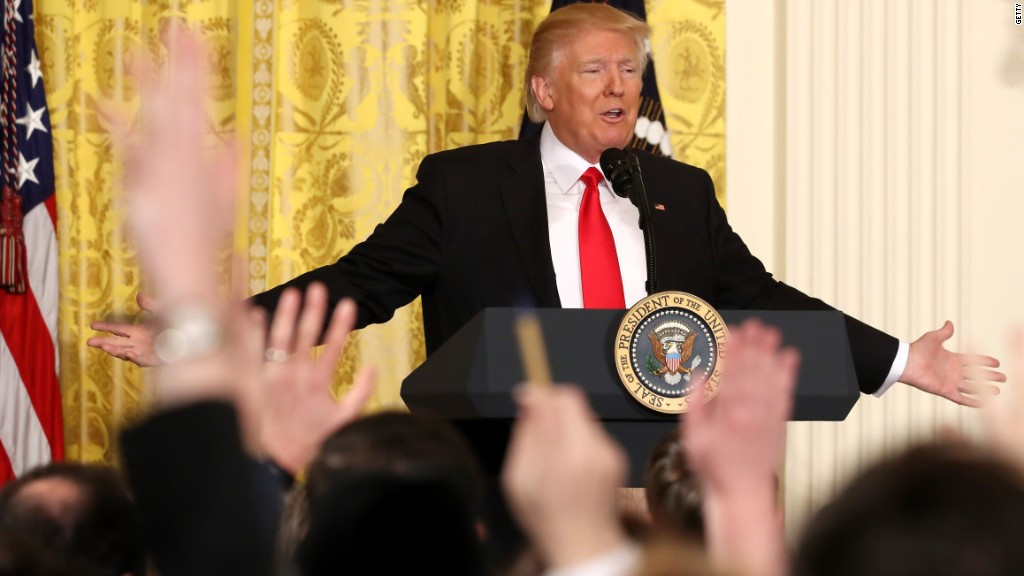Oil Prices Plunge: Trump's Return Sparks Fears of a New Trade War and Energy Market Chaos
In just over 60 days, President Trump will once again occupy the White House. The US, OPEC, and Russia are leading the world into suspense and cliff-hanging anticipation of market volatility. With oil prices prone to geopolitical headwinds, it may become a more turbulent ride as Trump’s policies pass through both chambers of the federal legislature in early 2025. The market is already “recycling narratives as we try to figure out what a Trump administration really means,” says Rebecca Babin, senior energy trader at CIBC Private Wealth US. Higher risk in Ukraine is countered by Iran, better data out of China met by weaker U.S. data, Babin says. This push-pull dynamic highlights the uncertainty surrounding the future of global energy markets.
Trump's Energy Policy: A Domestic Focus?
As Trump entered office for his first term as President in 2017, the US pipped Saudi Arabia as the world’s largest crude oil producer, with outputs peaking at 13 million barrels per day. He tore down environmental regulations, opened federal lands to drilling and promoted US shale and LNG exports as a priority during his first term in office. And his position has not changed. Come January, he will prioritize domestic fossil fuel production, this time intensifying even further. There is much anticipation for renewed support to the oil and gas industry and a cold shoulder for renewables from within his administration. Oil production is at record levels in America. However, Trump’s unilateralism on energy matters may heighten geopolitical difficulties, especially with Russia and OPEC.
The Russia Factor
Trump claims he and Putin have an understanding, and that Putin takes him much more seriously than those who have challenged him for office. Although Trump placed sanctions on Nord Stream 2 construction, pushing back against Russian ambitions in Europe, he openly admitted to developing a personal diplomatic relationship with the Kremlin boss. Whilst diplomacy can be beneficial, his views on Russia have often muddied the waters on the stance of the US. Trump likely also knows tightening sanctions on Moscow will only lead to reduced global supply and higher energy prices. Though leniency toward Russia risks alienating allies in Europe and seeing a resurgence of Russia’s energy dominance. Regardless, uncertainty creates volatile markets which is evident in current conditions.
The Geopolitical Tightrope: Navigating Sanctions and Alliances
Since Russia’s invasion of Ukraine, the G7 and EU set a price cap on Russian energy at $60 per barrel. The cap’s main aim is to limit Russia’s earnings from oil exports and maintain market stability, however, reports suggest Russian oil has been trading above this price. This has led to a reduction of Russian revenue from oil exports, but exports to countries that are not participating in sanctions, and shadow fleet tankers, cause challenges for the West. Production rates largely stabilized, with the demand for cheap energy extending across many markets. Openly, India and Hungary have admitted to buying Russian energy, and investigations revealed that Turkish refineries are acting as middlemen to re-export Russia’s energy to others, including Western allies. Trump’s proposed solution to the conflict prompts many questions. Should Trump be able to broker a quick peace deal between Russia and Ukraine, would he quickly loosen the sanctions on Russia? And what will that mean for EU-US relations, and for European gas supply?
OPEC's Response and Production Levels
At the height of Covid in 2020, both Russia and Saudi Arabia engaged in a price war, and Trump intervened and brokered an agreement to cut production by 9.7 million barrels per day, and threatened import tariffs on both Russia and Saudi Arabia to protect domestic US producers. His own desire for cheaper fuel prices for US consumers often puts him at odds with OPEC’s market strategy for stabilisation through production cuts. In response to Trump’s policies and actions, OPEC+ kept supply tight, pushing up prices. It also did not help that the de facto leader of Saudi Arabia, Mohammed bin Salman refused to take calls from Biden to loosen up supply and increase production. Trump will see this as an opportunity to apply pressure on Saudi Arabia to increase production in January 2025 and beyond. While OPEC has gradually increased its production, it is nowhere near levels that significantly reduce the cost of oil globally. So, while Trump may be willing to play hardball with OPEC if talks break down regarding production agreements, it may be counterproductive and have unwanted effects.
The Looming Threat of Tariffs: A Déjà Vu from 2018?
If there is one event anyone can recollect immediately from Donald Trump’s first Presidency, it is the trade war. Beginning January 2018 (a year after the swearing in), Trump enforced import tariffs on various goods, some focussed on China. It later turned out to be a major trade war between the US and China as the latter also started imposing tariffs on US imports. The US dollar gained momentum on the back of the trade war. As a result, commodity prices such as base metals and crude oil were beaten down. The Indian rupee also took a hit as the Chinese Yuan weakened sharply during that time. With Trump focusing on tariffs this time too, will there be a déjà vu effect on commodities and currencies?
The Impact on Commodities and Currencies
Base metal prices were directly impacted by the earlier trade war. It began in January 2018 when a tariff on all imports of washing machines and solar panels were imposed. The tariff war then intensified in March 2018 when a tariff of 25 per cent on steel imports and 10 per cent on aluminium was announced. Until 2017, the base metals were on a bull run. The S&P/TSX Global Base Metal Index peaked at 132 in January 2018 and tumbled about 35 per cent to around 85 by the end of 2018. Among the individual metals, Zinc, down 29 per cent was the worst hit during this period. Aluminium prices fell by 17 per cent and Lead was down 19 per cent. Copper and Nickel declined about 16 per cent each. The trade war aided the US dollar to gain strength. After witnessing a 10 per cent fall in 2017, Trump’s first year of Presidency, the dollar index bottomed near 89 in February 2018. From there the index surged 8 per cent to end 2018 near 96.50. As the trade war was more focussed on China, the Chinese Yuan was knocked down by the dollar strength. The Yuan fell about 10 per cent from around 6.25 to 6.95 against the US dollar. The Indian rupee had a strong correlation with the Chinese Yuan at that time. As a result, the domestic currency fell a victim of the US-China trade war. The Indian rupee depreciated from around 64 to 70 against the dollar in 2018, down by about 8.5 per cent for the year. Crude oil price witnessed a strong rally until the third quarter of 2018. Supply disruption due to sanctions on Iran and economic crisis in Venezuela - the country with largest oil reserve, had pushed the price higher then. But the trade war resulted in China cutting down its oil imports from the US causing oil prices to crash towards the end of 2018. According to the US Energy Information Administration (EIA) the exports of Crude Oil and Petroleum products to China tumbled from 15.89 million barrels in July to 6.29 million barrels in December 2018. Brent Crude Oil prices crashed by about 38 per cent from its peak of about $85 per barrel in October 2018 to $52 by the end of that year.
A Bleak Outlook or a Glimmer of Hope?
Donald Trump coming back to power has reignited the fear of a trade war again. Bank of America’s Francisco Blanch warns that Trump’s proposed tariffs, potentially reaching 20% on most countries and a staggering 60% on China, could significantly curb global trade. This, Blanch argues, would lead to decreased demand and lower prices for oil and natural gas. While Trump’s promise to deregulate fossil fuel production in the US might seem like a bullish factor, Blanch contends that lower prices would disincentivize increased drilling. US oil production is already at record highs, reaching 13.4 million barrels a day in August. However, Blanch acknowledges some upside risks, namely geopolitical tensions in the Middle East and Ukraine. A renewed focus on sanctions against Iran and Venezuela under a Trump administration could tighten supply and push prices upward. The interplay between these factors—trade wars, domestic production, geopolitical risks, and OPEC's strategies—will shape the energy market's trajectory in the coming years. The uncertainty remains palpable, leaving the market to navigate a complex web of interconnected forces.
Crude futures snap a two-session winning streak as concerns about next year's supply and demand outlook keep a lid on geopolitically driven rallies. WTI for December goes off the board at $68.87 a barrel, down 0.7%, and Brent falls 0.7% to $72.81 a barrel. The overarching theme is that the market looks oversupplied in 2025 and it will take a lot to shift that. Ultimately, Trump's return and his subsequent policy decisions will be the pivotal factor in determining the future of global energy markets.


















